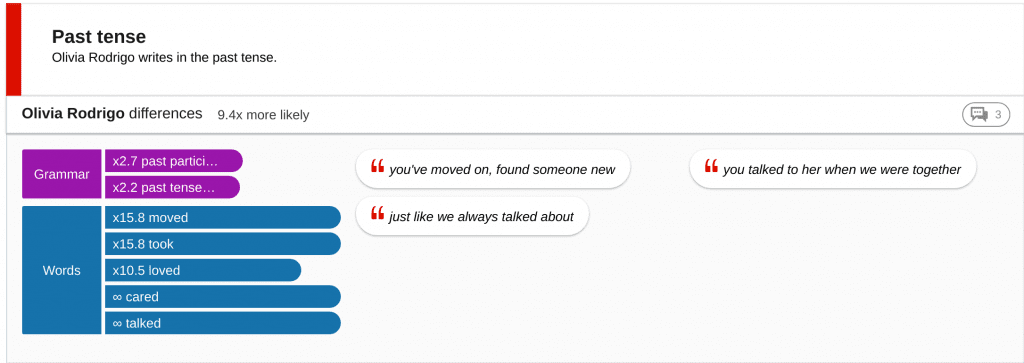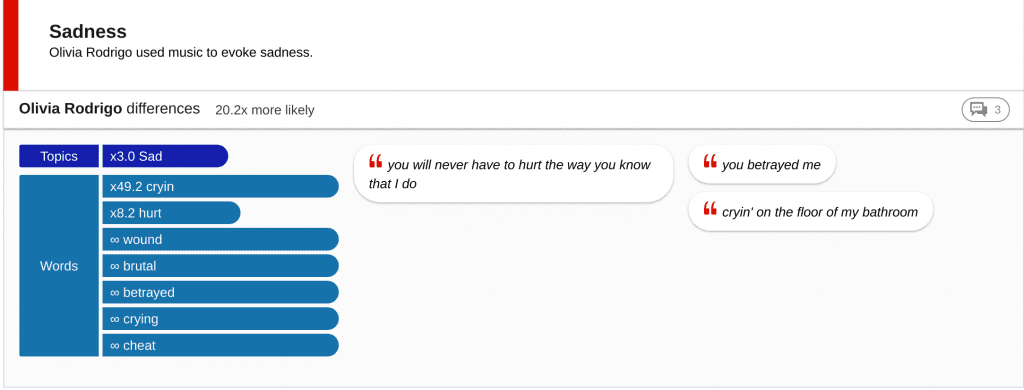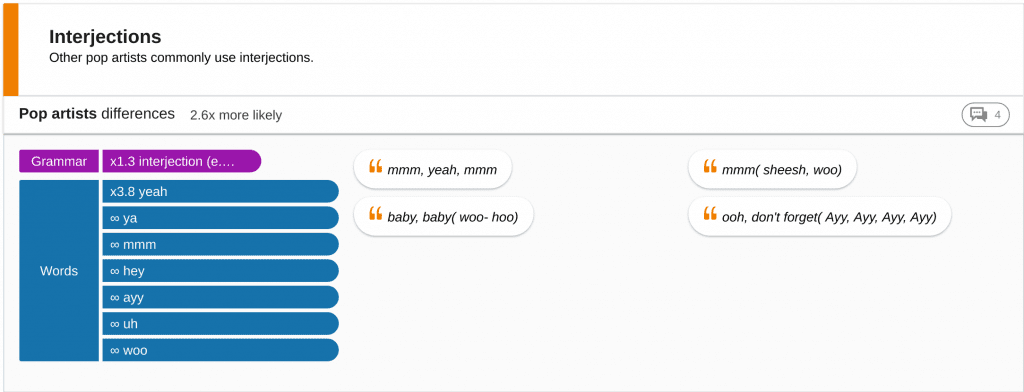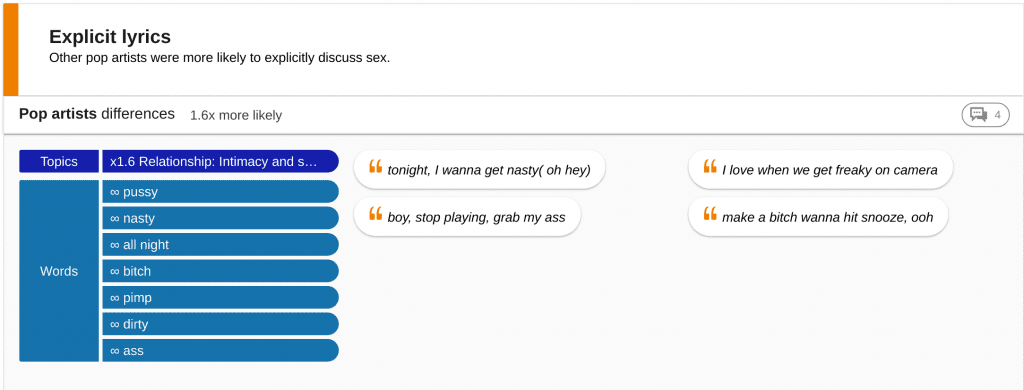What makes Olivia Rodrigo so relatable?

If you spend any time on the internet whatsoever, you’ve probably come across the song driver’s license by Olivia Rodrigo. And if you’re anything like me, it’s probably been playing in your head for months.
But just what makes Olivia Rodrigo’s music so relatable to so many people? To find out why, we compared the lyrics in her new album Sour against a selection of other current female pop artists. This will uncover the written techniques unique to Rodrigo’s music and how she uses language to evoke an emotional response from her listeners.
Relative Insight thrives on this form of comparative text analysis. Our technology compares the language of two written data sets, side by side, to uncover what makes each unique. This analysis will reveal the words, phrases, grammar, topic and emotion Rodrigo utilizes more than her counterparts – giving us the recipe for relatable lyrics.
Olivia Rodrigo
Rodrigo approaches lyrics through the lens of storytelling, which we observed through her use of different grammatical techniques like past tense. She used past tense verbs like loved, moved and cared to recall scenes from her life. This retrospective viewpoint is crucial in traditional storytelling and invites the listener to reminisce on their own memories.


The second grammatical technique our analysis uncovered is the use of first and second person pronouns like I and you. This linguistic choice makes Rodrigo the narrator of her story, giving the lyrics a deeply personal and authentic feel. Rodrigo avoids he, she and other third person pronouns which distance the narrator from the story.
An accurate portrayal of emotions is crucial in creating relatable writing, which Rodrigo proved to be a master of. She evokes a range of emotions including dislike, content, happy, emotional, sad, like and bravery. Our analysis only highlighted one significant emotion seen from the other artists, compared to seven for Rodrigo. This range of emotion keeps the listener engaged, while the overarching melancholy theme helps to avoid emotional whiplash.
The most significant emotion we saw from Rodrigo’s album Sour is sadness. She was more likely to use words like crying, betrayed, wound and hurt throughout her lyrics. These experiences are easily relatable and evoke stronger responses than positive emotions. Misery loves company, right?


Female Pop Artists
Most other pop songs are forward thinking and written in the future or present tense. This technique creates hopeful messaging – but loses the impact of traditional past tense storytelling, which we observed from Rodrigo.
Pop artists love a good vocal sound. They were more likely to use interjections like hey, uh, woo and mmm. While Rodrigo used a few ohs of her own, they were much more commonly seen from the other artists. While pleasing to the ear, these words play little role in narrative storytelling and aiding the artist in connecting with the audience.


The content of music from other artists was significantly more explicit. Artists often addressed the topic of sex, using words like nasty, dirty and pimp. While some artists are successful because of explicit language, the purity of Rodrigo’s music would be lost if she employed the same technique.


All of the music artists we analyzed are extremely successful – meaning none of these linguistic choices are wrong. We wanted to understand what sets Olivia Rodrigo apart from the rest of the industry. We found that narrative storytelling and a range of emotion give her an edge in a sea of explicit lyrics and woos.
